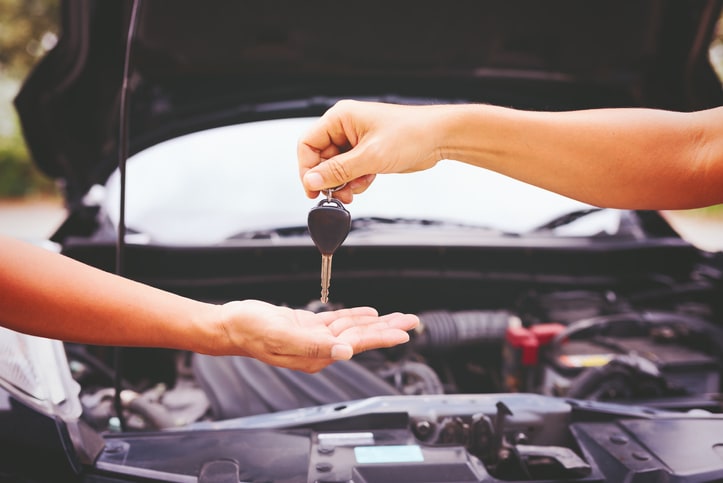The Ultimate Used Car Buying Guide

You’ve probably heard that a car is the second-largest purchase the typical American makes after their home, but when comparing the numbers, that’s not really true. It might seem like it, since the median home price in the U.S. was around $240,000 last year, while a new Honda Civic starts at about one-tenth as much. When you look a little deeper, though, you’ll probably only ever own one home at a time, and when you sell it, you’ll get your money back. You might even make a profit on the sale.
With a car, though, the life expectancy is just under a decade, it has limited resale value, and many families own several automobiles. Because of this, the actual cost of car ownership over a lifetime can be staggering. A two-car family who drives a new pickup truck and minivan and trades in every five years can expect to spend roughly three-quarters of a million dollars on their cars in their lifetimes.
So why do we assemble a team of professionals to buy a house and then spend weeks or months agonizing over our decision, but dedicate little more than a Saturday afternoon to buying a car? This guide is meant to help bridge the gap between the seriousness with which we tend to take home buying and car buying.
STEP 1: WHY ARE YOU BUYING A USED CAR?
Buying a used car is a much better value than buying new for most people. Few products lose their value faster than a car, whose value plummets the minute it’s driven off the lot. Buying a one- or two-year-old vehicle can save thousands of dollars off the sticker price of a vehicle, but even buying a used version of this year’s model can be a windfall, because someone else has paid for the initial depreciation once the vehicle lost its new car smell.
STEP 2: HOW MUCH CAR CAN YOU AFFORD?
A big part of buying a used car is figuring out how much you want to spend. Have an honest look at your financials and see how much you can afford. Play around with a financial calculators too, so you get a sense of the different variables, like down payment, length of the loan, and interest rate, that go into your monthly payment. If you do need to save up for a down payment, you can make sure your spending is on track to meet your goal.
STEP 3: HOW DO YOU KNOW IF A USED CAR IS IN GOOD CONDITION?
Even if you know a lot about cars, you should take it to someone who knows as much as or more about cars than you do. You’re not going to be objective, because your bias toward a car you like (or your desire to just be done with test drives) will lead you to overlook flaws that a neutral observer will not. Dealerships will usually let you take a used car to a mechanic you trust, which is your best bet to make sure the car is in good condition.
STEP 4: GET MORE INFO ABOUT A USED CAR
If you want to find out about a car before you meet up with the seller, ask for a CarFax report. While these reports usually cost around $40 a piece, American Heritage members can get one for free! All you need is the VIN (Vehicle Identification Number) to get started. These reports help you shine a light on the history of the vehicle you’re looking at. If there’s anything fishy like a significant accident history, an odometer rollback, or an open manufacturer recall, you’ll know about it and be able to walk away or negotiate the price accordingly. Remember—the better informed you are, the more power you have when it comes to haggling with the dealer over prices.
STEP 5: OTHER THINGS YOU CAN DO TO PROTECT YOURSELF
No matter if you’re buying from a dealer, a friend, your pastor or the reanimated corpse of Henry Ford himself, you should always take a car for a test drive. Find a route that simulates your morning commute; don’t just go on the route the dealer wants to take you. Take some left turns. Accelerate to freeway speeds. Ride in the back seat for a while. Make sure you actually like the car before you spend thousands of dollars on it.
STEP 6: GETTING OVER THE FEAR OF NEGOTIATION
Negotiating a car sale isn’t most people’s cup of tea. It doesn’t have to be an intimidating process, though. You have all the power in the transaction: You can buy a car from the first person or the 10th, while the salesperson needs to make every sale he or she can.
STEP 7: ENSURING A SMOOTH NEGOTIATION PROCESS
Make sure you have a plan before you start shopping—and stick to it! This will help you from getting caught up in the stress of the negotiation. If it helps, bring a friend or loved-one along with you when you go shopping for cars to make sure you stick to your plan.
1. KNOW YOUR PRICE
The internet is a fantastic resource. Once upon a time, the salesperson knew more than the customer about car prices, and that was particularly true of used cars. Now, you can determine the price you’re willing to pay before you ever walk in, and refuse to pay one cent more than that. If you want, you can even email back and forth between multiple salespeople, letting them bid against each other.
2. DON’T SAY TOO MUCH
There’s very little you can say to make a negotiation go better, but there’s a lot you can say to make it go worse. If in doubt, don’t say anything. It can be difficult, particularly when the silence is awkward and tense, but saying nothing is often the right thing to do.
3. WALK AWAY
It’s an old saying in sales: “He or she who can walk away controls the deal,” and it’s been passed down from bullpen to bullpen because it’s true. If you aren’t willing to walk away and leave the salesperson without a sale, then what incentive does he or she have for lowering the price? When you go out to buy a car, make a resolution to wait a week before you buy. That will make it easier to walk away and give you time to make sure you’re certain of your purchase.
STEP 8: SHOULD YOU FINANCE THE CAR AT THE DEALER?
One of the keys to negotiating a car deal, whether at the dealership or from a private seller, is securing the best financing available. Even 1% difference in your interest rate can be worth hundreds, or even thousands, of dollars over the life of the loan.
GET YOUR FINANCING FIRST
The best way to get the best rate is to borrow from your credit union. Our auto loans have fantastic rates, and we’re not trying to sneak in any hidden charges or fees. If you come to us first, you can make a clear plan for how much you can spend, so you’re not surprised when that first payment is due. We can also tell you how much you’ll need as a down payment, and might even have some good tips on who you can trust in town. You can get started with the pre-approval process today.
Hopefully, if you’re planning on buying a used car, you’ll save money and get a vehicle that will make you happy for years to come. And remember, you’re always welcome to talk with your partners at American Heritage Credit Union for more information and guidance to make your car buying experience as enjoyable as possible.

